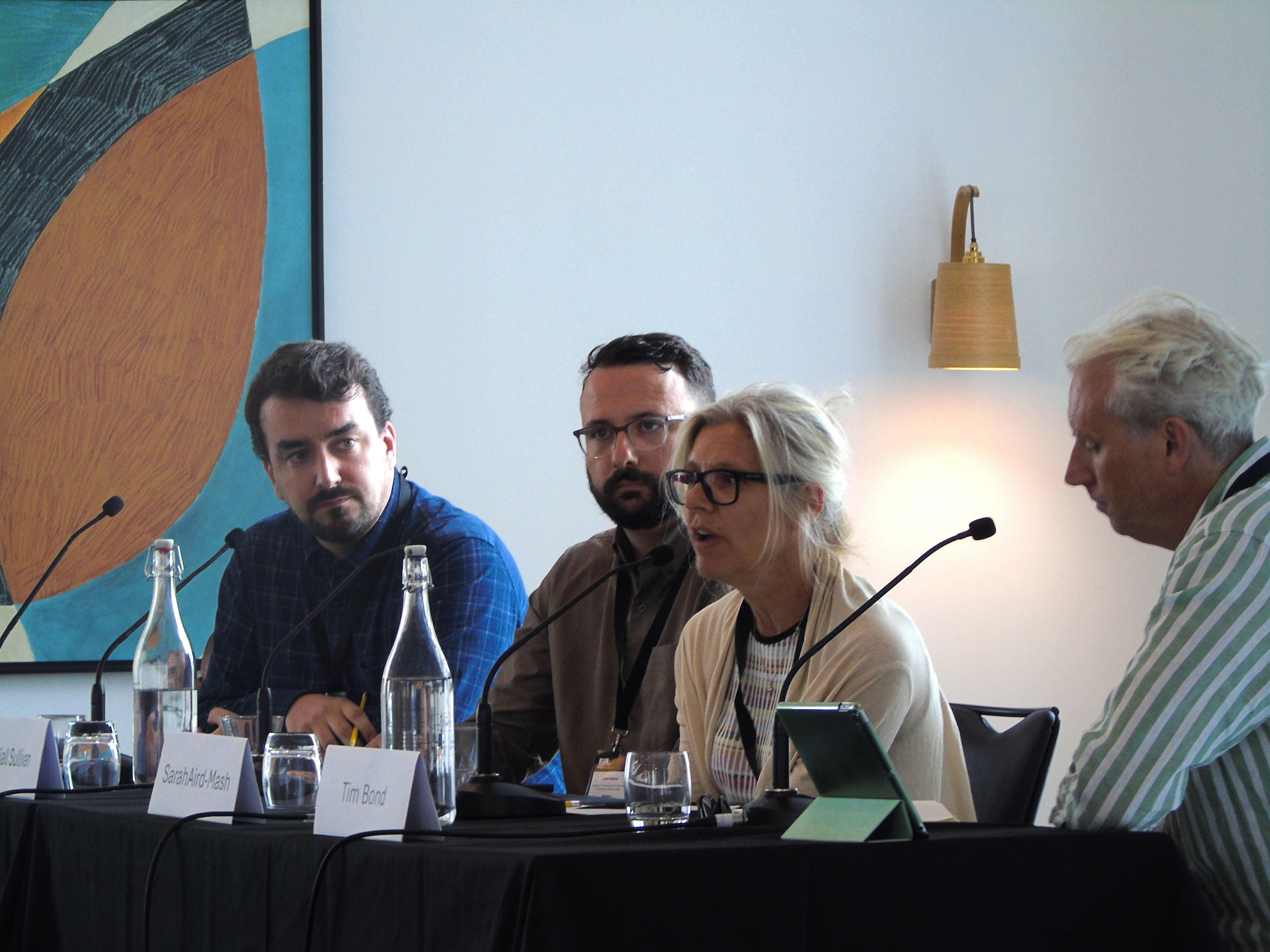So, you’ve set up your ad campaigns, entered all of your keywords, written some blinding copy for your ads and you’re ready to see your website traffic increase, but after waiting a number of days you see that your click-through rates are disappointing and you’re missing out on all that traffic.
Before we start looking at ways to improve your click-through rates, let’s just take a minute to make sure that you understand what the click-through rate means and discuss what a good click-through rate is.
Click-through rate (referred to as CTR in the rest of this post) is a ratio displayed as a percentage between the number of times an ad was displayed and the number of times it was clicked on. For example, if your ad was displayed 100 times and clicked on 1 times, then the click-through rate would be 1%.
CTR is measured against both the keyword as well as each individual ad. For example, you may have an ad group that has 5 keywords that serve the same ad. Each keyword has its own click-through rate, that then leads to the overall ad click-through rate.
If you do a search on “what is a good CTR” you’ll find a myriad of different answers and opinions. There are so many different factors to consider, that to give one figure as a benchmark is virtually impossible. Click-through rates will vary across different industries, different ad types (e.g. search, display, shopping), different keyword match types (broad, phrase, exact), whether you’re using branded or non-branded keywords and so on.
So, don’t obsess with finding a benchmark - what the average click-through rate is, what other people are doing or achieving really doesn’t matter. What matters is your account performance, see what your CTR is, use that as the line in the sand and the benchmark to improve from.
Actions you can do today to improve your CTR
1. Segment your ad groups
Keeping your keywords segmented into very tight ad groups means that you are able to serve more relevant ads to your audience. Consider an ad group for a dentist that has the following keywords:Dental surgery
Dental surgery London
Emergency dentist
Emergency dental surgery
Emergency dental practice
Dental implants
NHS dentists
NHS dental appointments
Always remember that relevancy matters, the more relevant your ad is to your keyword, the better your chances are of getting the click. If all of these keywords were in one ad group, it would be very difficult to create one piece of ad copy that was relevant to all of the keywords.
In this example, we should consider that there are many keywords that all have different user intent. For example someone looking for dental implants, may not be looking for a dentist in an emergency. Using this methodology, we could break down the keywords into separate ad groups as per the table below;
| Ad Group |
Keywords |
| Dental Surgery |
Dental surgery Dental surgery London |
| Emergency Dentist |
Emergency dentist Emergency dental surgery Emergency dental practice |
| Dental Implants |
Dental implants |
| NHS Dentist |
NHS dentist NHS dental appointments |
This would be a great start as you would be able to write ad copy that is specifically relevant to the keywords. But, depending upon traffic levels, if you are seeing a significant number of impressions for the keywords, you could split this down even further, creating a new ad group for dental surgery London, emergency dental surgery, emergency dental practice and NHS dental appointments.
2. Split test your ads
In each ad group, you should have at least 2 ads written and competing against each other. Monitor the click-through rates of each one. Identify which ad has the higher click-through rate, keep that one running as a benchmark and pause the other. Write another ad with the aim of outperforming the benchmark ad. When running split tests, be careful that you have enough data to make your decision on. Use a statistical analytic tool such as Perry Marshall’s Split Tester where you can enter the metrics and the tool will tell you whether there’s a good probability that one ad will outperform the other over a longer time period.
Also, make sure that when you are split testing, that you only change one different part of the ad each time, for example, the call to action or the headline. If you change too many different components of the ad, you won’t know which one has caused the change in performance.
3. Extended Ads
With the updates to Google Ads it is now possible to add a third headline and second line of description to give your ads more real estate on the page. They won't always display, but you can use them to provide more of a value proposition and better explain your offer.
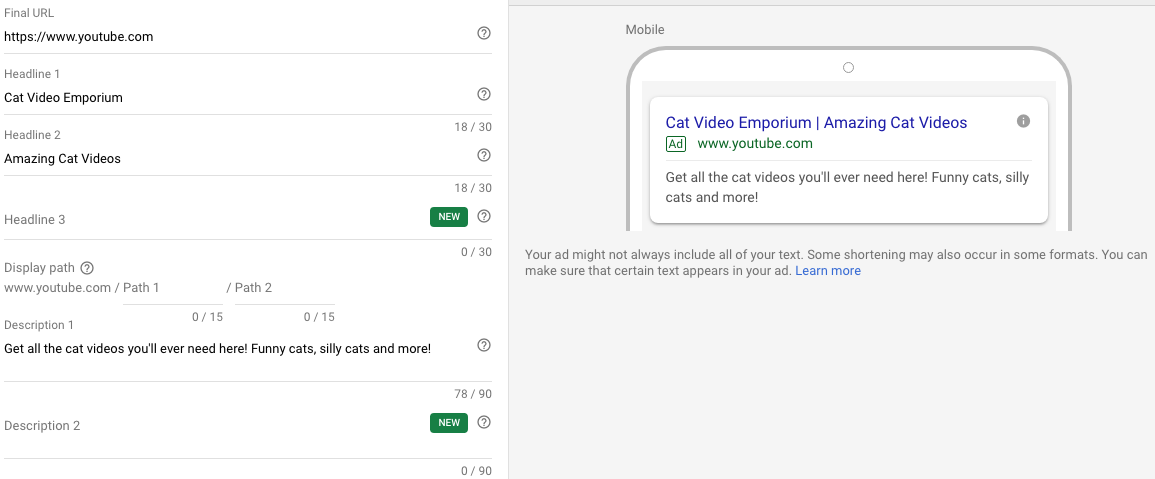
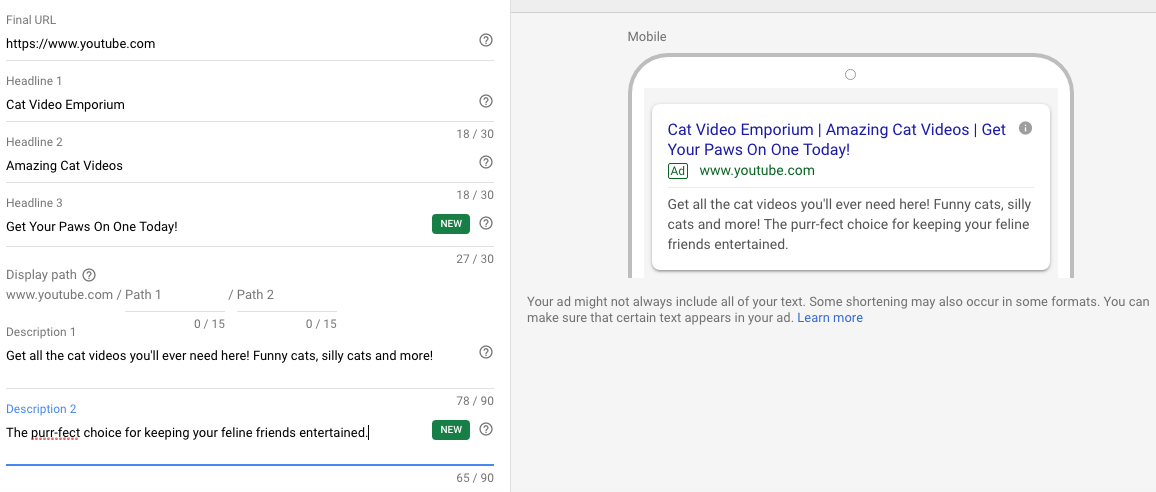
4. Ad extensions
You can further extend the ‘real estate’ owned by your ads when they display in the first three positions by the use of ad extensions. Take a look at the difference between these two ads for example. The second commands much more space on the results page as well as providing much more information about their service. Which one would you click?
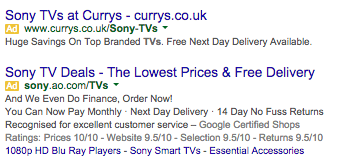
There are a number of different extensions that you can you use, it’s outside the remit of this blog post to discuss the different types, but this document from Google explains the different sitelinks and how to set them up.
5. Bid management
The positioning of your ad on the search result page will affect your CTR as generally ads in the first 3 positions will get a far greater CTR than ads down the side of the page. You can find a report called the Top vs. Other report in the segment tab when looking at your keywords.
Each keyword will have its own set of results so analysis needs to be done at a keyword level and bids set accordingly to balance out the need for a higher click-through rate as well as a profitable cost per conversion.
6. Negative Keywords
This is arguably the most important aspect of AdWords account maintenance that you can perform as well as the most impactful. Within each campaign or ad group of an account, under the keyword tab, there is a button called search terms.
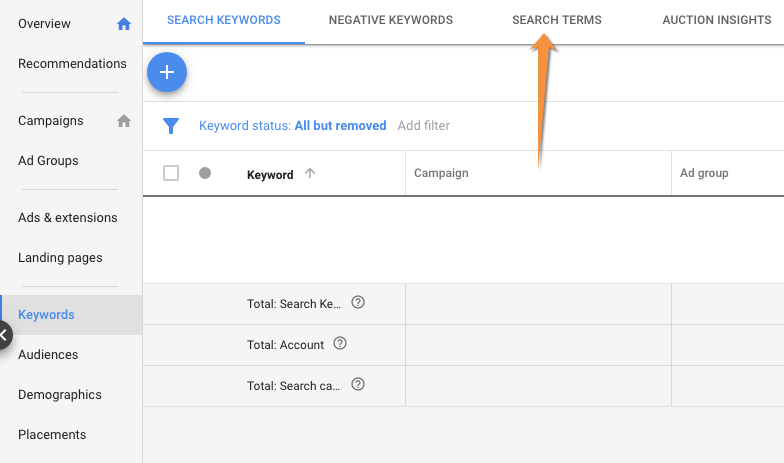
Pressing this gives you the search terms report, which is a list of the actual terms used by the people searching that caused your ad to display.
If you’re using broad match keywords, then this gives Google licence to serve ads whenever it deems the actual search term used to be broadly relevant to the keyword. On the whole Google will do a good job here, but often there’ll be terms that are not relevant to what you’re promoting. In the dentist example above, one of the terms used was “dental surgery”, if broad match was being used then search terms that could trigger the ads are as follows;
| Search Term Used |
Number Of Impressions |
Number Of Clicks |
Click-Through Rate |
| Dental Surgery |
146,000 |
1460 |
1% |
| Dental Practice |
35,480 |
240 |
0.67% |
| Dental Surgery Jobs |
23,000 |
65 |
0.28% |
| Totals |
204,480 |
1765 |
0.8% |
In this fictitious example, the dentist intent with the keyword “dental surgery” is to get new customers, not to advertise jobs. So they would add the word “Jobs” to their negative keywords so that their ads didn’t display. If this was implemented the click-through rate for this keyword would be:
| Search Term Used |
Number Of Impressions |
Number Of Clicks |
Click-Through Rate |
| Dental Surgery |
146,000 |
1460 |
1% |
| Dental Practice |
35,480 |
240 |
0.67% |
| Totals |
181,480 |
1700 |
0.93% |
So by adding in one negative keyword, it’s improved the click-through rate of that particular keyword by 0.13%. On it’s own, that doesn’t seem to be a great increase, but if you continue monitoring your search term reports and set irrelevant terms as negative keywords, as well as reducing the number of wasted clicks and therefore costs, the small differences will all add up to significant gains.
Summary
In summary, CTR is an important key performance indicator of your account and is worth paying attention to. By improving the CTR of account, you will not only increase the traffic to your website, but as CTR is one of the factors affecting keyword quality score, you’ll see a gradual increase, which in turn will affect the amount you pay for each click.
If you would like some ideas on how to improve the CTR’s of your account, book a free PPC audit with one of our certified Google AdWords consultants.
Stay Updated with Our Latest Insights
Get expert HubSpot tips and integration strategies delivered to your inbox.

